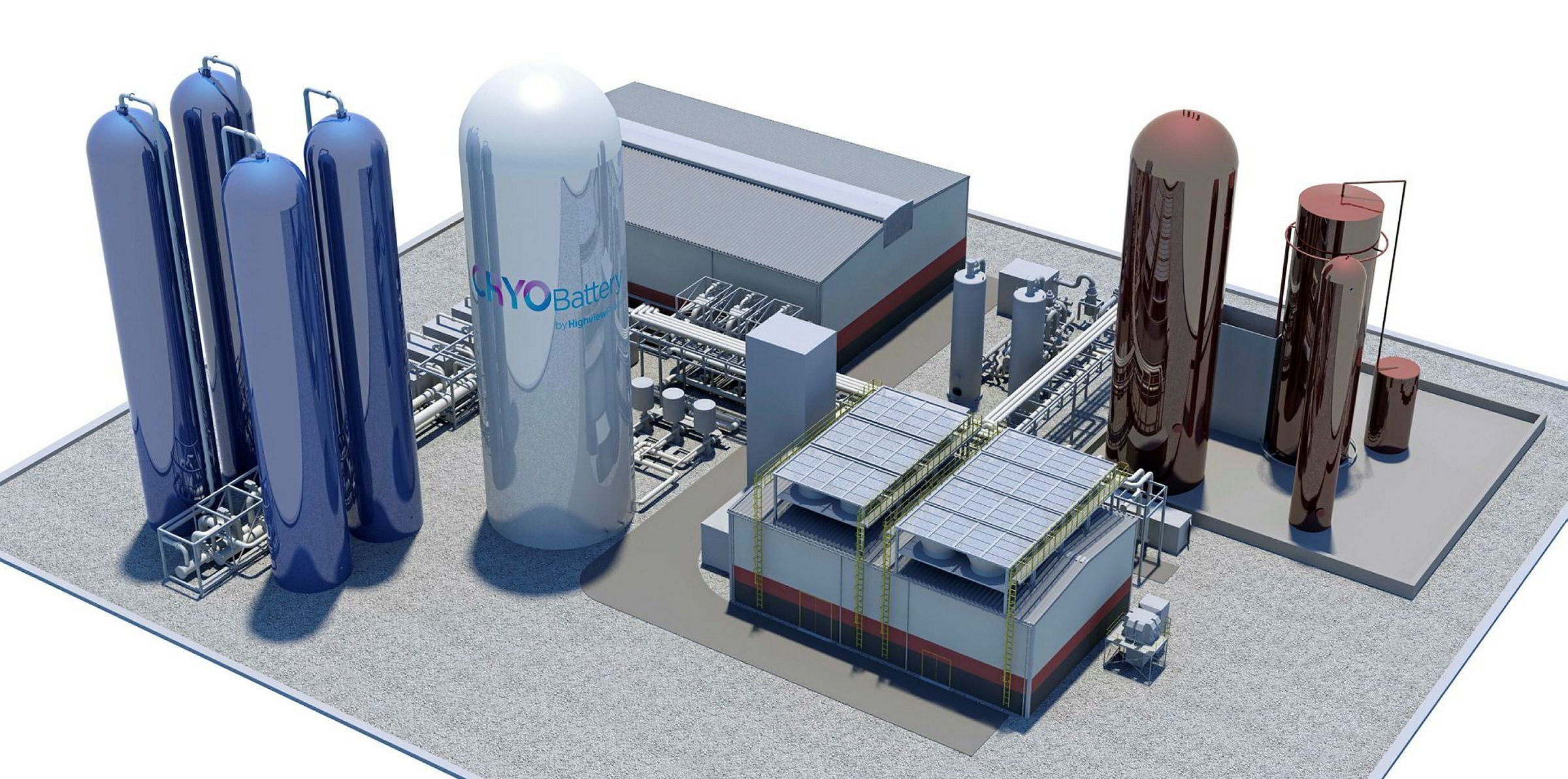The world’s first commercial liquid-air energy storage facility — a 50MW/250MWh unit — is to begin construction this year in Greater Manchester, England, after technology company Highview Power received a £10m ($12.5m) grant from the UK government.
A joint venture between UK-based Highview and independent solar/natural-gas plant developer Carlton Power will build and operate the “CRYObattery” — which may later be expanded to add more storage — in the village of Carrington, close to Manchester United’s training ground.
It will be the first commercial project emerging from the upcoming range of build-anywhere long-duration intermittent-energy storage (Baldies) technology — which act much like pumped hydro but can be built anywhere — beating competitors such as Siemens Gamesa’s hot-rock thermal technology and Google X off-shoot Malta’s molten-salt storage.
In a statement, Highview said its cryogenic energy-storage systems, which use frozen liquid air as its storage medium (see panel below) “are the only long-duration energy storage solution available today that are locatable and can offer multiple gigawatt-hours of storage. That represents weeks’ worth of storage, not just hours or days”.
“At giga-scale, CRYOBatteries paired with renewables are equivalent in performance to — and could replace — thermal and nuclear baseload power in addition to supporting electricity transmission and distribution systems while providing additional security of supply. At approximately £110/MWh for a 10-hour, 200MW/2GWh system, the CRYOBattery offers a competitive levelised cost of storage for large-scale applications.”
By comparison, a new pumped-hydro plant would have an levelised cost of storage of $152-198 per MWh, with a comparable lithium-ion system costing $285-581/MWh, according to analyst Lazard.
Highview was the only recipient of the UK Department for Business, Energy and Industrial Strategy’s Storage at Scale competition. The company will also be using some of its recent £35m investment from Sumitomo Heavy Industries to fund the project, which will use existing substation and transmission infrastructure. Income will come through grid balancing, ancillary services such as frequency response and voltage support, and arbitrage — buying electricity when wholesale prices are low and selling it when prices are high.
The joint venture plans to co-develop four more CRYObattery projects in the UK, totalling more than 1GWh.
Highview is also building a 50MW/400MWh plant in the US state of Vermont in conjunction with developer Encore Renewable Energy.
Highview chief executive Javier Cavada told Recharge last year that the company has 40 projects in its global pipeline.
“The largest projects we are looking at are in the Middle East, North Africa and Latin America — largest in megawatts and largest in megawatt hours too. There are projects we are looking at of 100MW and 200MW, with ten to 15 hours of storage [ie, up to 3GWh], co-located with solar [to enable dispatchable PV],” he said at the time.
After providing the grant, UK energy minister Kwasi Kwarteng, said: “This revolutionary new CRYOBattery facility will form a key part of our push towards net zero, bringing greater flexibility to Britain’s electricity grid and creating green collar jobs in Greater Manchester. Projects like these will help us realise the full value of our world-class renewables, ensuring homes and businesses can still be powered by green energy, even when the sun is not shining and the wind not blowing.”
Highview's liquid-air technology uses electricity to cool air down to -196°C, shrinking its volume by a factor of 700, which is then stored in low-pressure vacuum-insulated steel tanks — the kind that houses liquefied natural gas. When this cryogenically frozen air is exposed to ambient temperatures, it turns back into a gas and rapidly expands, with the rush of air from this 700-fold expansion directly driving an electricity-generating turbine.




